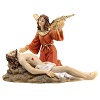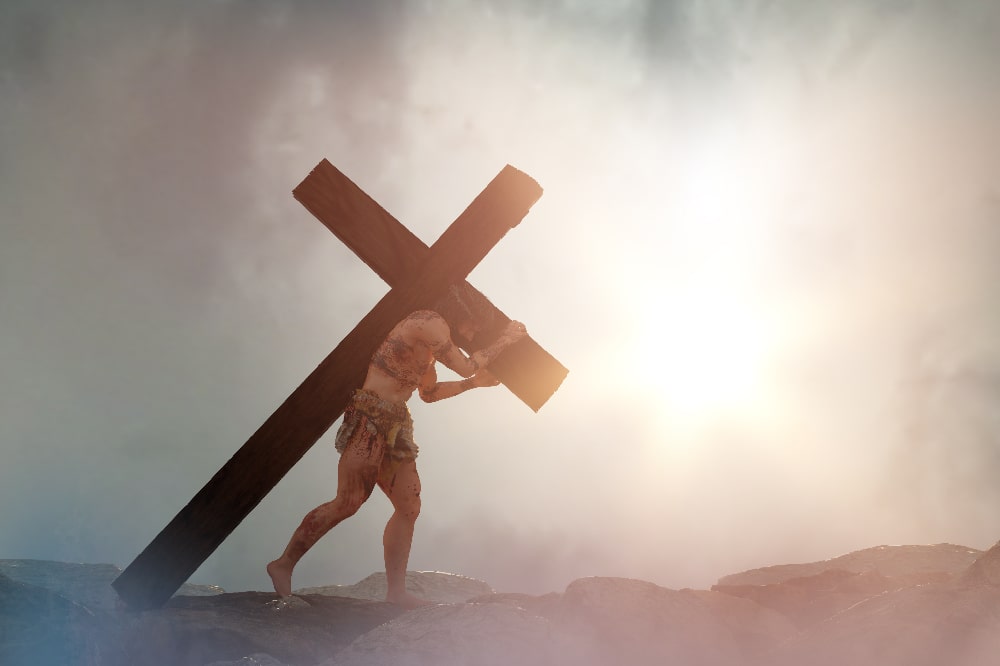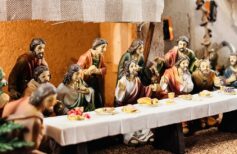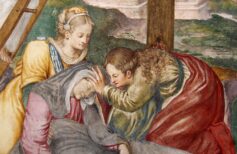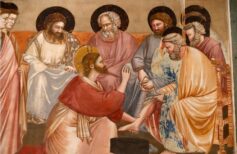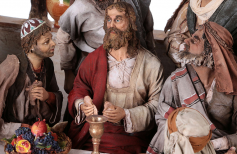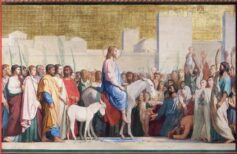The Passion of Jesus is the highest and most terrible moment of his parable among men. From the Last Supper to the deposition in the tomb let’s see how the last days on Earth have been
Contents
Easter is approaching, and we are preparing once again to celebrate the Resurrection of Jesus, and his triumph over sin and death. Before that, however, let us remember his passion, the tragic events that are remembered in Holy Week, which precedes Easter.
The canonical Gospels offer us a detailed account of the last days of Jesus (Matthew 26-27, Mark 14-15, Luke 22-23, John 18-19), from his arrival in Jerusalem to the Last Supper to the arrest, up to the ascent to Golgotha. Every evangelist gives importance to one or the other aspect of the story, according to his vision and sensitivity. If in Mark the attention to the revelation of the identity of Jesus as the Son of God prevails, in Matthew the fulfilment of Scripture is celebrated and his death is a prelude to the end times and a prophecy of what is to come. Both in Matthew and Mark, there is the recognition of Jesus as the Son of God, by the Centurion who guards the cross and bystanders.
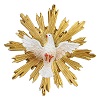
Luke offers an image of Jesus suffering and merciful even to those who torture and kill Him, while John shows Christ the King, clothed with the signs of royalty, the crown of thorns, the purple robe, and Pilate’s recognition of his role as King of the Jews. On the cross, regardless of her sufferings, she entrusts Mary to John, the beloved disciple, and exhales without a cry.
The Last Supper
It is the last moment of apparent serenity, just before Jesus’ arrest. He and his disciples have just arrived in Jerusalem and gathered in the Upper Room to celebrate the Passover. It is a normal dinner among friends, but Jesus already warns that it will be the last chance for him to be with these men whom he loves more than anyone in the world. The end of his time among men is approaching inexorably and he knows that the chalice that God the Father has prepared for him is the most bitter that can be imagined. He also knows that one of his friends will betray him and that another will deny him, and he tells the Apostles, that unbelievers protest. They also protest when Jesus washes the feet of each of them, an act of great humility, but also immense love. The death of Christ still seems so far away, and yet here he takes the bread and takes the wine and sacrifices himself in the first Eucharist, only an anticipation of what will happen in a few days.
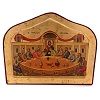
Jesus in Gethsemane
After supper, Jesus moves aside to pray in the Garden of Olives. He doesn’t want to be alone. The doubts are deepened in his mind, the fear of suffering that awaits him makes him tremble in his resolution. But the Apostles sleep and even God does not seem to want to hear his prayers. In the end, the choice is his and his alone: Jesus accepts that his destiny is fulfilled, he is ready to die.
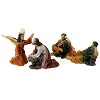
The Denial of St. Peter
The moment of Jesus’ arrest comes. Roman soldiers led by Judas break into the slopes of the Mount of Olives. Some disciples try to react by drawing their weapons, but Jesus stops them and gives himself docilely to his executioners. Jesus is brought before the priests Anna and Caiaphas, and it is at this point that Peter’s threefold denial is placed (before the meeting with the priests according to Luke after according to Mark and Matthew). In the palace courtyard, Peter is accused by a woman of knowing Jesus and being one of his own. Peter denies, not once but three times, just as Jesus had predicted during the Last Supper. Then he abandons himself to cry. The denial of St. Peter was immortalised by many masters of art, one for all Caravaggio.
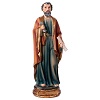
The trial at Pontius Pilate
The process of Jesus is also described in all the canonical Gospels. After being accused of blasphemy by the priests and the Sanhedrin, the Jewish tribunal, for having compared itself to God, Jesus is brought before the Roman governor of Judea, Pontius Pilate. A theological accusation is not enough to sentence him to death, a policy is needed. Pilate, though sceptical of the hatred that everyone manifests for a man whom he judges to be the most insane, condemns Jesus for sedition and injures majesty. The sentence is death by crucifixion.
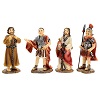
The Passion and Crucifixion of Jesus
Thus begins the sequence of events known as the true Passion. The Way of the Cross, or Via Dolorosa, traces in fourteen stations the path of Jesus from the tribunal in which he was condemned to the hill of the Crucifixion until the deposition of Jesus from the cross and then in the tomb. Devotional practice par excellence of Easter was born to allow even those who could not afford a pilgrimage to the Holy Land to follow the moments of the Passion of Christ, evoking his suffering made eternal in these scenes carved in stone or painted.
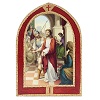
After being beaten and humiliated in every way, Jesus is crowned with a crown of thorns and clothed with a purple robe, in contempt of his proclamation as King of the Jews. Dragged out of court, he is stripped, whipped, and then the Cross is loaded on his shoulders, which he must carry to his last destination: the hill of crucifixion. Jesus advances between two wings of an angry crowd, that same crowd that a few days before had welcomed him joyfully in Jerusalem, waving leaves and palm branches. Among them, hidden and frightened, the Apostles, His mother Mary and the women who, despite everything, still love Him and participate helplessly in His agony step by step. Jesus wavers under the weight of the Cross and falls the first time. His gaze clouded by suffering meets that of Mary. It is only a moment, but we can imagine the atrocious suffering of Our Lady who sees her only son bent and broken in that way. The prophecy of Simeon is fulfilled, a sword pierces her soul (Luke 2:35), and yet even at that moment Our Lady puts aside her immense pain, tries to transmit to her son only love, tenderness, the last that he will receive in this world that is condemning him to death.

Simon of Cyrene is forced by the Roman soldiers to help Jesus to carry the Cross. Now they advance together, while Saint Veronica makes her way among the people to dry the face of Jesus, who again falls into the dust.
In front of the weeping of the women of Jerusalem Jesus comforts them, he who is suffering an unspeakable pain, and encourages them not to weep for him, but themselves and for their children. Then again he falls, for the third time, now exhausted.
Arriving at the top of Golgotha, Jesus is stripped of his clothes, stretched out on the wood of the Cross and nailed to his hands and feet, and then raised between two other crosses, those of two thieves. Even at this moment when His agony is about to reach its climax, Christ sets aside his pain and forgives Disma, the repentant thief, promising him paradise.
The death of Jesus is described with slight differences from the evangelists, as we have mentioned. After death, the body of Jesus is taken off the cross, claimed by Joseph of Arimathea, one of his disciples and a merciful man, and prepared by him to be laid in the tomb. From that tomb, Jesus will rise three days later, but at this point, we are beyond the Passion and in the fullness of his Glory.
